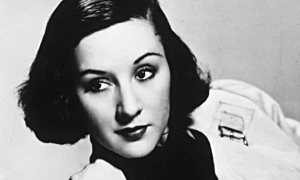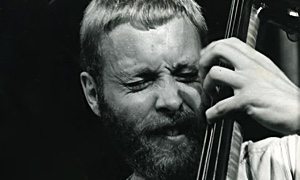Home » Jazz Articles » First Time I Saw » Dr. Billy Taylor
Dr. Billy Taylor
I finally got my father, who was not all that enthused about my interest in jazz at the time, to take me to hear Billy Taylor in person. Taylor and his trio were playing at an upper East Side club whose address was prestigious enough to reassure my father that we weren't going to some downtown den of inequity full of drug addicts and ladies of the evening. I'd also played a couple of Billy Taylor's records for him. Because my dad was an aspiring, self-taught pianist himself who only played on the black notes, Taylor's virtuosity and dazzling technique definitely got his attention.
The club was dimly lit and sedate and only about half full. The grand piano, and the drum set, and the reclining bass occupied the bandstand silently, like race horses waiting for their jockeys. I don't think the club owners really knew the kind of serious artist they had booked. They probably thought of Taylor as a "cocktail pianist." There was no MC and no introduction. At 9pm sharp, Billy Taylor, dressed in a classic single-breasted blue blazer, gray slacks and conservative tie stepped up to the stand accompanied by his rhythm section. I don't recall the bassist's name (hey, this was 40 years ago), but the drummer was Ed Thigpen. Already I could see that my father was impressed. He was a doctor and these guys dressed more conservatively than he did.
Less than six bars into the first tune, the dim little cocktail lounge was suddenly a live jazz venue and the energy that the trio was putting out filled the room. Taylor played a lot of old standards' show tunes, Gershwin, Porter, and a very understated blues. The interplay among the three men in the trio was subtle and loaded with nuances. Thigpen's fours were precious little jewels just perfect for this intimate setting.
Then the bassist and drummer left the stand. Taylor paused for moment to let the change set in, and began to play "Summertime" using only his left hand. His right hand remained quietly at his size, gently gripping the piano bench. Listening to it on a record, you could never have guessed the pianist was only using one hand. Each chord was struck in time precisely, and the runs and filigrees that Taylor hung from them as the song progressed were as complex and interesting as any two-handed solo you might choose to compare it to.
By the time he began the fourth chorus, he was still producing more and more complex and interesting variations, and it was clear that this was not some kind of parlor trick. It as a musical journey that showed how restricting one's pallet could actually enhance creativity. I have heard this song played countless times since, and it's always very pleasing and seductive. It is certainly one of the loveliest songs ever written. But to this day I've never heard a more definitive rendering of the mood and the essence of Gershwin's "Summertime."
I sometimes feel that because Billy Taylor has for so many years been such a busy ambassador, teacher and promoter of jazz as an art form, people forget how wonderful it is just to sit back and listen to him play. Luckily he has a formidable body of work on record and what's so impressive about it is the consistent level of excellence.
Any day now, I expect to hear that Billy Taylor has released his first recording of solos for left hand only. He is what it means to be a virtuoso.
< Previous
May 2004
Comments
Tags
For the Love of Jazz
 All About Jazz has been a pillar of jazz since 1995, championing it as an art form and, more importantly, supporting the musicians who create it. Our enduring commitment has made "AAJ" one of the most culturally important websites of its kind, read by hundreds of thousands of fans, musicians and industry figures every month.
All About Jazz has been a pillar of jazz since 1995, championing it as an art form and, more importantly, supporting the musicians who create it. Our enduring commitment has made "AAJ" one of the most culturally important websites of its kind, read by hundreds of thousands of fans, musicians and industry figures every month.























